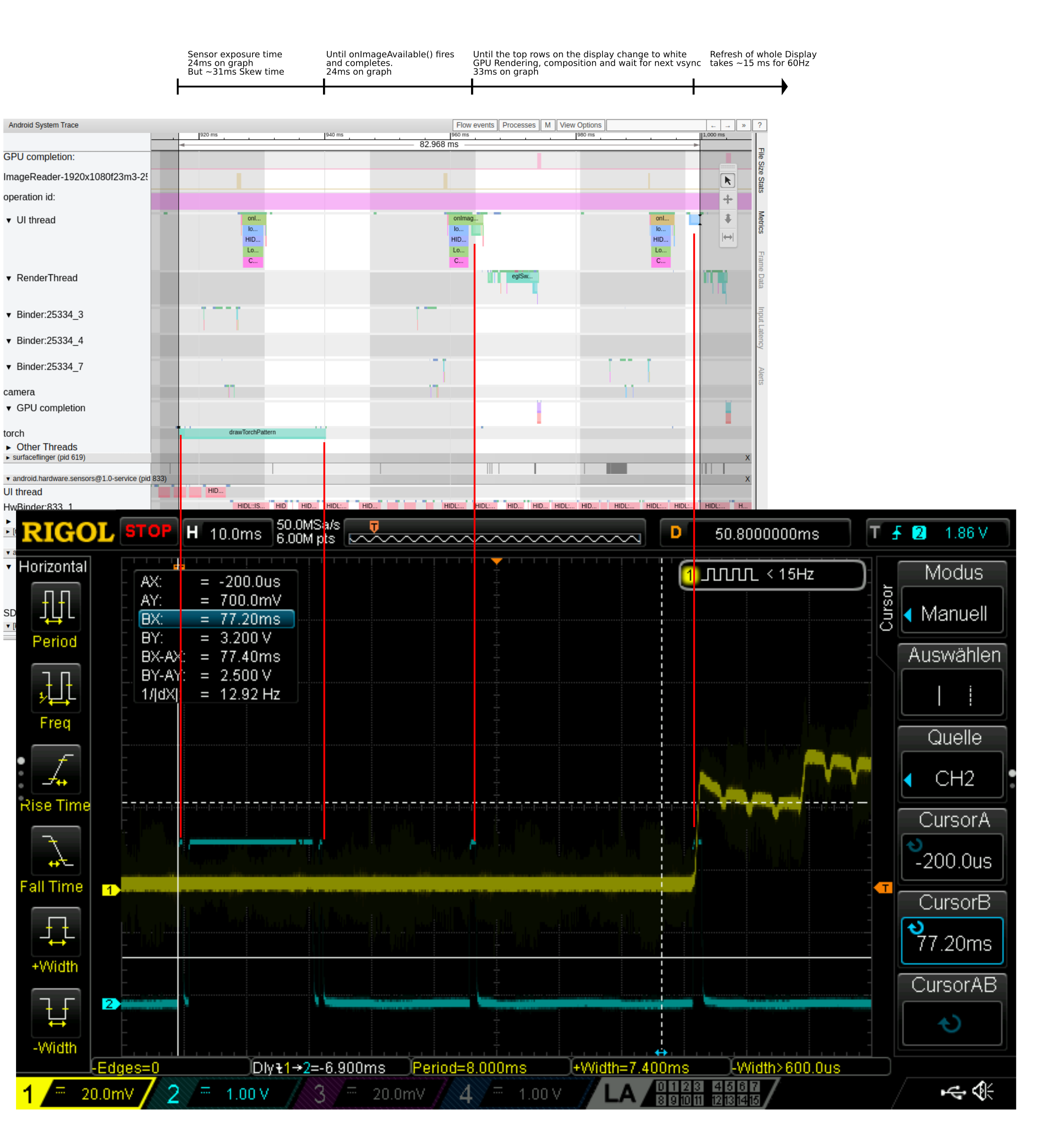Android - Glass-to-glass latency
This repo is a collection of tests and code that were used to investigate the glass-to-glass latency on an Android smartphone.
What is the glass-to-glass latency? If you have a device with a camera and a display, like a smartphone or a camcorder, the glass-to-glass latency is the time between capturing an image by the camera and showing the frame on the display again. It's the time between the class of the camera and the glass of the display.
Usage
The code in this repo is not expected to work as-is, or even compiled and deployed to an Android device. The repo is a treasure trove of snippets and ideas to look at. You can copy&paste maybe some code lines or files, but it should be the base for your own experiments: Just look and read, don't execute.
Nice bits and pieces
These things maybe interesting:
A MilliSecondsClock that tries to be precisely as possible. It uses Android's Choreographer to update the time for every frame that the displays shows at 60hz.
A FlashToggleSpeedFaster class and a FlashToggleSpeedFaster class to test how fast the flash light (=torch light) can be toggled from an app/userspace. I used the flash light as a synchronization mechanism between the software/app and the external measurements with an oscilloscope.
A CameraToDisplay class that can use three different backends: an ImageReader, a Texture View and SurfaceView. If found no latency differences between these three backends.
The folder pixeltorch contains a C library to switch the torch light (also used as a flash for the rear camera) of the Pixel2 on and off. It was extracted and reverse engineered from the camera HAL of the Pixel2. The Java implementation starts here: PixelTorch.java
Talk & Blogpost
This repository was mentioned in the talk Adventures with Systrace - Measure and investigate the glass-to-glass latency in Android. I held the talk at The AOSP and AAOS November meetup.
The meetup homepage is The AOSP and AAOS Meetup. You can find the link to the slides and the video on the meetup's homepage. And here is a backup of the slides committed in this repo.
This repo is also mentioned in the blogpost Glass-To-Glass Latency on Android – How Fast Is Your Smartphone’s Camera Really?. The post is a written down version of the talk.
History
I did this investigation in 2022 to understand the latency and the inner workings of the Android graphics subsystem.
The result of the investigation is summarized by a single systrace graph and oscilloscope screenshot:
Maybe some useful notes
My code and tests were done on a rooted device. It was flashed with vanilla
AOSP build in userdebug mode. Using ioctls to control the torch light
from an app only works, when you disable a lot of security checks:
$ adb root
$ adb shell chmod o+rw /dev/v4l-subdev12
$ adb shell setenforce permissive # disable seLinux
To download an image from the example app, I used the follow commands
adb shell run-as de.inovex.latencytest cat /data/user/0/de.inovex.latencytest/files/image0.jpeg > image0.jpeg
Some of my traces were done with the command:
$ ~/Android/Sdk/platform-tools/systrace/systrace.py \
--atrace-categories=sched,gfx,hal,irq,ion,camera,sm --time=2 \
-o systrace.html -a de.inovex.latencytest
